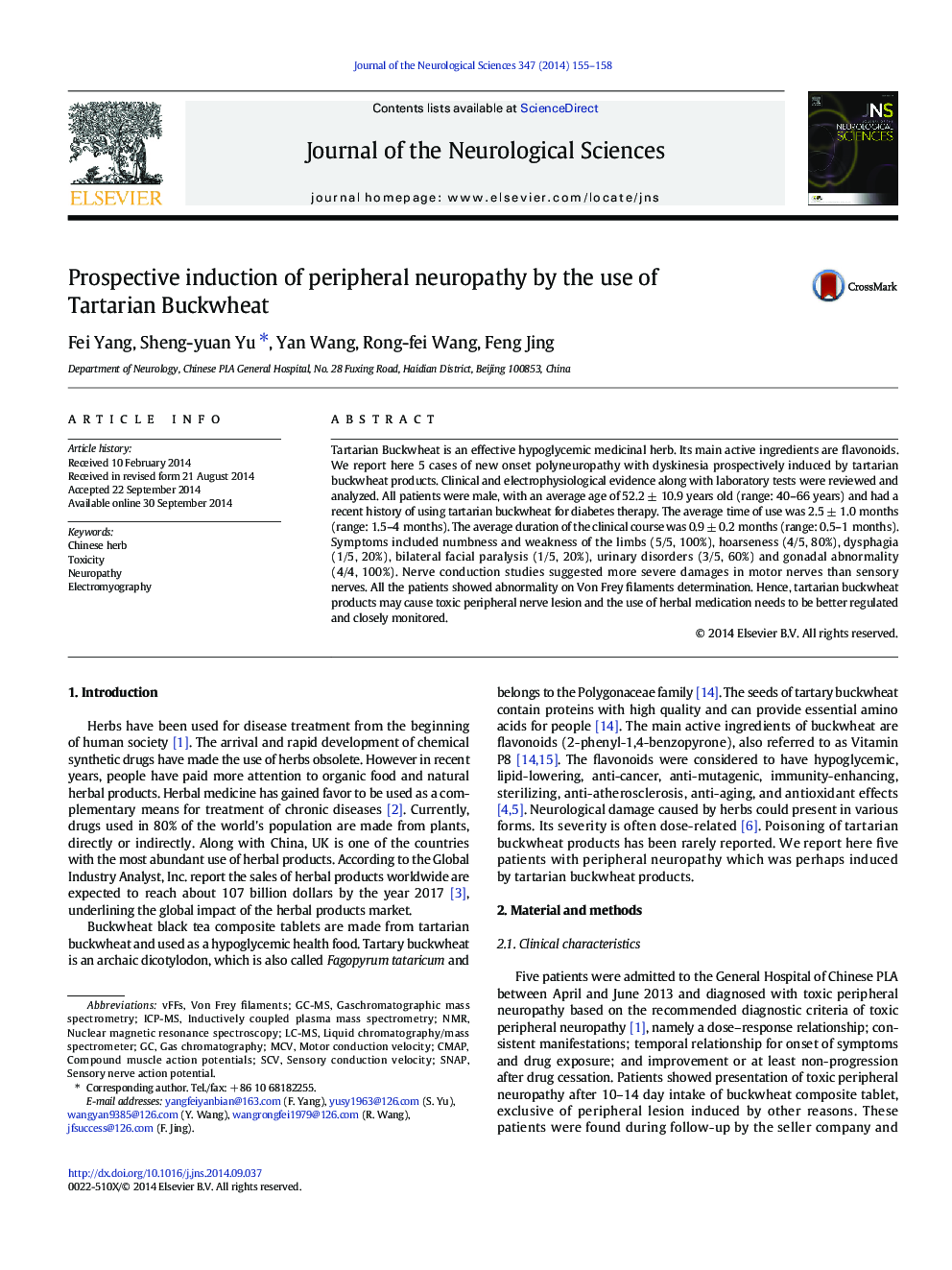| Article ID | Journal | Published Year | Pages | File Type |
|---|---|---|---|---|
| 8276646 | Journal of the Neurological Sciences | 2014 | 4 Pages |
Abstract
Tartarian Buckwheat is an effective hypoglycemic medicinal herb. Its main active ingredients are flavonoids. We report here 5 cases of new onset polyneuropathy with dyskinesia prospectively induced by tartarian buckwheat products. Clinical and electrophysiological evidence along with laboratory tests were reviewed and analyzed. All patients were male, with an average age of 52.2 ± 10.9 years old (range: 40-66 years) and had a recent history of using tartarian buckwheat for diabetes therapy. The average time of use was 2.5 ± 1.0 months (range: 1.5-4 months). The average duration of the clinical course was 0.9 ± 0.2 months (range: 0.5-1 months). Symptoms included numbness and weakness of the limbs (5/5, 100%), hoarseness (4/5, 80%), dysphagia (1/5, 20%), bilateral facial paralysis (1/5, 20%), urinary disorders (3/5, 60%) and gonadal abnormality (4/4, 100%). Nerve conduction studies suggested more severe damages in motor nerves than sensory nerves. All the patients showed abnormality on Von Frey filaments determination. Hence, tartarian buckwheat products may cause toxic peripheral nerve lesion and the use of herbal medication needs to be better regulated and closely monitored.
Keywords
sensory conduction velocitySCVMCVCMAPLC-MSGC-MSVon Frey filamentselectromyographyNMRMotor conduction velocityToxicitySNAPNuclear magnetic resonance spectroscopyinductively coupled plasma mass spectrometryICP-MSNeuropathySensory nerve action potentialcompound muscle action potentialsGas chromatographyChinese herb
Related Topics
Life Sciences
Biochemistry, Genetics and Molecular Biology
Ageing
Authors
Fei Yang, Sheng-yuan Yu, Yan Wang, Rong-fei Wang, Feng Jing,
